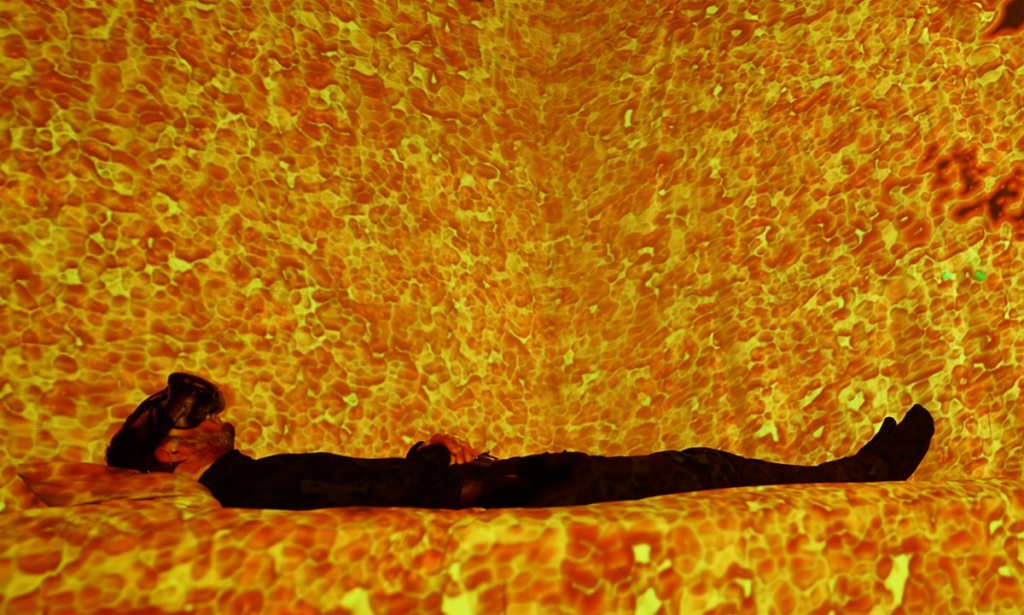Ever since consumers got their first hand-help mobile devices, there has always been correlation between insomnia and our technology. Even before there was concrete evidence about screen time decreasing the amount of sleep humans get, consumers have been cautious on how they let modern day technology infiltrate their sleeping schedule. If you search ways to fall asleep faster, or anything like that, you are going to be prompted to put the screen away before you got to bed, and to reduce screen time throughout the day. But is that the best way to fall asleep? RMIT University out of Australia may have an answer, and it is not what you expect.
Designed and made by PluginHUMAN, Inter-Dream is a bed that is interactive with you while you listen to ambient music. This music is controlled by the artists and the visuals are controlled by the own users brainwaves. Although this sounds outlandish and a little crazy, it is realistic and very helpful. Through the technology of an EEG, you were going to be able to turn your brainwaves into images. Each frequency is assigned a different color and intensity, and all of it is meant to soothe you.
Nathan Semertzidis, a RMIT PhD researcher, has been assigned to this project, and is assessing it as something to put you in pre-sleep states as well as something that is meant to help your mental health in a more general sense.
“Technology and sleep are always talked about as incompatible,” Semertzidis says. “Our findings flip that notion upside down and show how technology can also aid rest and relaxation. Results demonstrated statistically significant decreases in pre-sleep cognitive arousal and negative emotion. EEG readings were also indicative of restorative restfulness and a clear mind, while interview responses described experiences of mindfulness.”

Using Inter-Dream has shown some real results as well. 21% of users reported a drop in negative emotion and a whopping 55% reported a drop in fear they felt before entering. The report from RMIT doesn’t note if these were scared of the simulation itself and those fears were soothed, but we assume it was already existing before Inter-Dream made an appearance. Positive emotions were increased by a combined 21% when all was said and done.
These numbers are something to take notice of. Everybody knows that sleep can only be induced if you are in the right headspace at the given time. If you are worried about your daily routine and emotions, sleep can be very hard to come by. Even Semertzidis knows this. He went on to say that “Good sleepers are generally more relaxed and positive, while bad sleepers are more likely to focus on unpleasant and intrusive worries and stressors because of involuntary mental rehearsal of the past day’s events,” he says. “It makes sense that influencing these cognitive mood states can help us better ease into rest.”

This is not the final answer to helping individuals the sleep they need each night, but this is something that is going to help us further the research along. Putting a VR headset on is not going to help you fall asleep, no matter how hard you try to twist it. What it can do is relax you though, and getting you ready for your sleep can be just as important as the sleep itself. If you are interested in trying this sleep journey, you can visit RMIT’s official site, as they are expected to extend the testing to more and more patients.






























